













Weightlifting proves to be extremely beneficial for seniors / PAGE 6
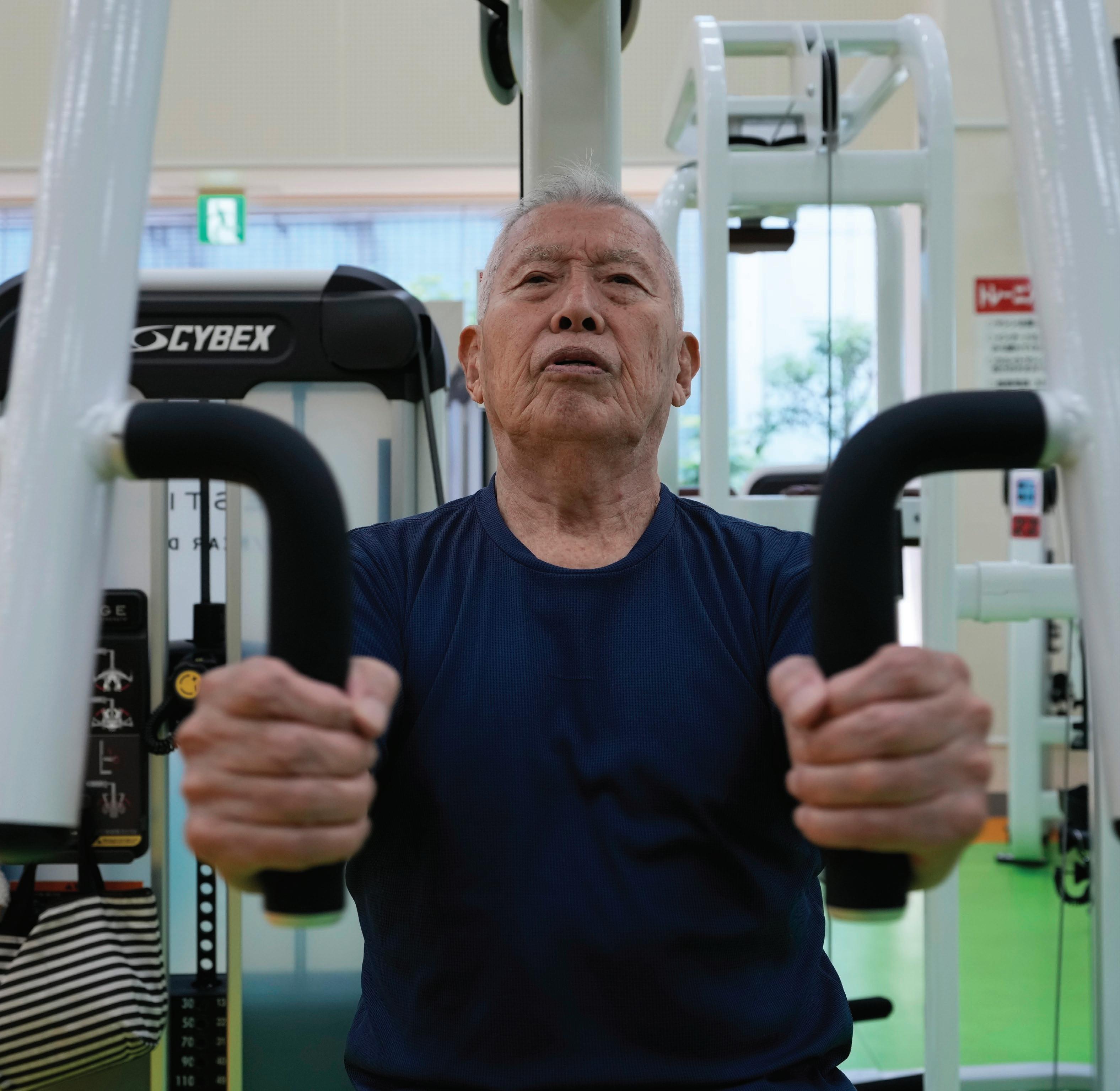
SATURDAY, AUG. 3, 2024 / VOL. 34, NO. 8














ON THE COVER: In this photo by Hiro Komae, of The Associated Press, Shigeo Takahashi, 83, uses a pec deck machine as he works out at the Fukagawa Sports Center in Tokyo. Weight-resistance training might deliver unexpected benefits for seniors. Find the story on Page 6.

AUGUST BIRTHDAYS: Elizabeth Heimgartner and Wilma Keehr-Mercer Howell, Page 3
EDITOR: Dallas Marshall, (208) 848-2232/ dmarshall@lmtribune.com
SUBMISSION DEADLINE for the September issue is 5 p.m. Aug. 15.
GOLDEN TIMES: P.O. Box 957, Lewiston, ID 83501 goldentimes@lmtribune.com





> AUG. 15
Elizabeth Jane Heimgartner, 95
Friends and family are invited to a get-together for Elizabeth Jane Heimgartner on Aug. 17 from 1:30-4 p.m. at the Rivaura Winery Private Event Room at Spalding.

Elizabeth was born in Juliaetta to Arl and Cora Weatherby Burns in 1929, the youngest of five, and was nicknamed “Betty-Boop.” Having a caring family lessened the challenges of the Depression era, and later, as a teenager, the shock of losing her mother
in a car accident.
She graduated as valedictorian from Juliaetta High School in May, and in June she married Floyd Heimgartner, the love of her life for 72½ years. Their four children are scattered around the U.S., with Carol in Washington, Kenneth in Virginia, Joyce in Texas and Mark in Idaho.
We can also thank “Betty” (and Floyd) for giving the world 11 wonderful grandkids and 10 great-grandkids.
Lifelong employment for both Betty and Floyd with the Juliaetta Post Office was coupled with community service and a passionate zeal to follow their children’s, and then grandchildren’s, activities.
Betty now lives in Lewiston, and carefully drives to Juliaetta each week for
worship at the Juliaetta Community Church.
> AUG. 22
Wilma Keehr-Mercer Howell, 85

Wilma Keehr-Mercer Howell, of Lewiston, will celebrate her 85th birthday Aug. 22. Wilma was born in 1939 in Stites, Idaho, to Raymond Keehr and Edna Dinwiddie Keehr. She has three siblings; Bette Gaye Redfern, of Fairbanks, Alaska; Fred Mercer, of Kamiah; and Bill Mercer, of Philomath, Ore.
Wilma currently resides at Royal Plaza Retirement Community. She enjoys
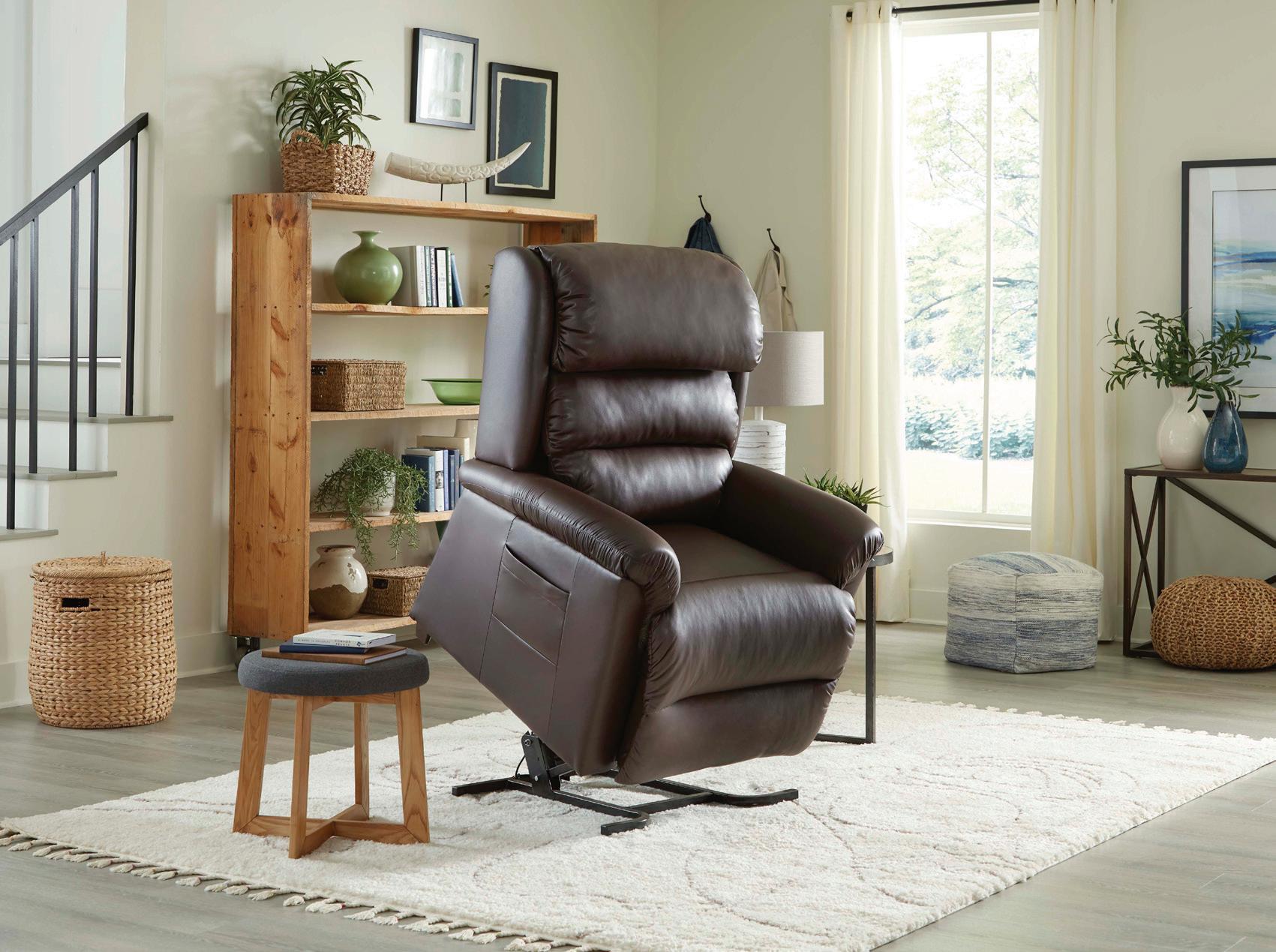

playing bridge, dominos and cribbage and all other activities offered at Royal Plaza. She especially loves watching Gonzaga Bulldog men’s college basketball with friends while enjoying a cocktail. She’s always the social butterfly.
Wilma had an early birthday celebration with family and friends in July.
To submit birthdays: Birthday
announcements starting at age 70 are accepted for free publication in the month of the birthday only. Length limit is 200 words. All submissions must include the name and contact information of the person submitting the announcement. Current photos are welcome — please no dated pictures. Submissions may be sent to goldentimes@lmtribune. com or Golden Times, P.O. Box 957, Lewiston, ID 83501. Questions may be directed to editor Dallas Marshall at dmarshall@lmtribune.com.


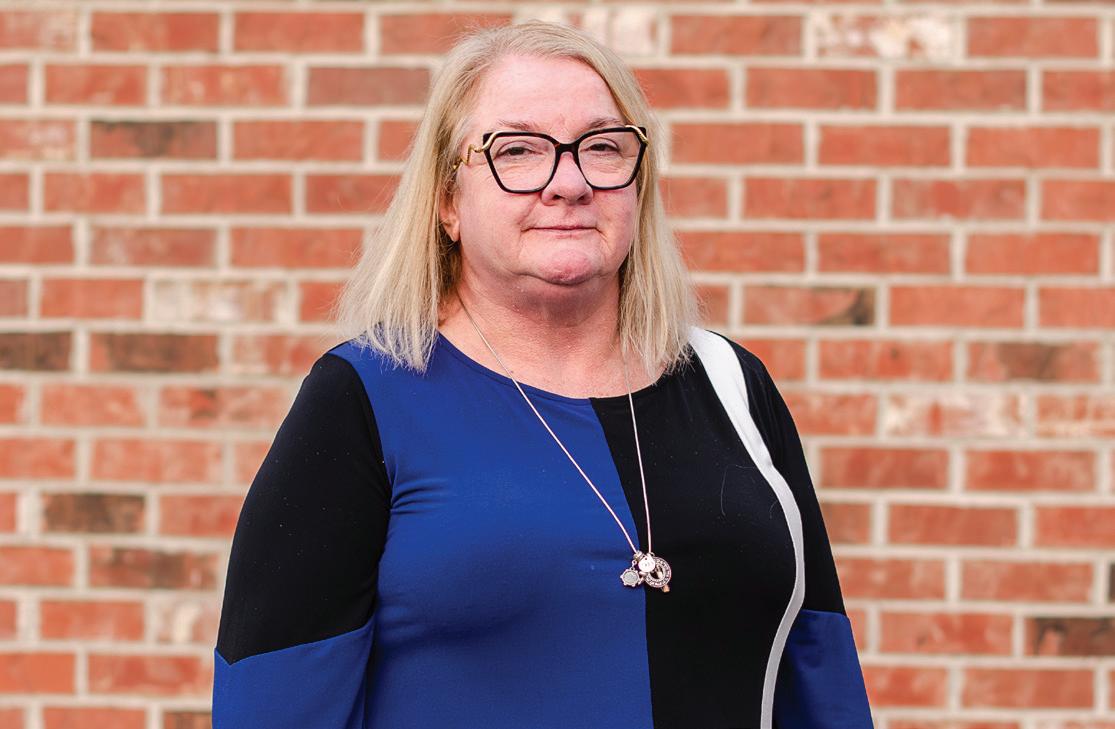





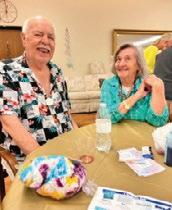
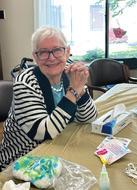
















Iasked a group of friends what advice they’d give to their younger selves. Most of this article will let you know their answers, with a few musings of my own.
One of the most common answers dealt with self-care. Most women are so busy taking care of others that they don’t put themselves at the top of the list. But this advice is good for both men and women. Taking care of body, mind and spirit isn’t always easy and never was, I suppose.





















younger years, work had to come first to feed the family. In our senior years, we get the luxury of spending more family time with the grandchildren which seems to help make up for those times we missed with our own children.
GALLIVANTING GRANNY
Be yourself. Say what you think or feel. The aging process seems to give us more freedom in those areas in my opinion, or maybe by the time we age well, we realize that not everything needs to be said, or that there’s a better way to say it. Most of all, be thoughtful and kind with words. Maybe ask yourself if what you have to say is important enough to risk a relationship.



I will begin with feet first because there are so many old sayings about feet firmly planted, feet on the ground, and so on. They are the foundation on which you stand daily. Fatigue mats for those who stand all day have been so important. I hope the old style of pointed-toe shoes and very high heels are gone because they wrecked so many feet and when the feet go wrong, the knees and hips are also strained.
*Cable and WIFI *Maintenance *3 Meals Per Day *Hair Salon *Climate Controlled Units *Housekeeping *Snacks *Library *Fitness Area * Laundry *Month to Month Lease *Chapel *Full Social Calander
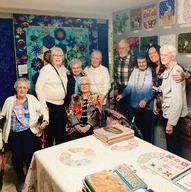






















Skin care is another area where both men and women need be concerned. Today there are product lines for both sexes and sunscreen is probably my first thought. Having had a skin cancer removal made me more aware of how important it is to forget being suntanned. Men, don’t forget to use sunscreen on your ears. Moisturizers make the skin feel wonderful and the neck area is not to be neglected.
Read the fine print twice. With my need for glasses, that seems like good advice, but then, it always was. It seems that it’s always the smallest print with the most important stipulations or areas of later contention.
Travel while you can, even if on a small budget. While you’ve read that advice from me in the past, it was mentioned often by others. Go where and while you can. Broaden your experience, try new things and new places.
Pay yourself first. Don’t forget to save. Compound interest is important and knowing where your money goes is the first step in setting a good budget, but saving should always be part of it.
While several mentioned family time over work time, it seems that in our
Love the person you see in the mirror. There was a time when I couldn’t. Accepting oneself with flaws and all takes work sometimes and having someone you trust to help in the process is worthwhile.
You may revisit the past, but you can never experience it again in the same way as the first.
Love cannot be purchased except with time, experience and tenderness. People will disappoint you and you may disappoint others. Be willing to give grace or ask forgiveness when warranted.
Most of what we worry about will never happen. Trust the process and yourself that you’ll be able to handle any end result.
Get educated while you’re young so you insure your freedom when you’re not. Work smarter, not harder.
Choosing a life partner is one the most important decisions you’ll ever make. It can also be one of the most expensive. Take time for your decisions that are of such importance. See the other when they’re both happy and angry. Pay attention to how they treat others.
Live your dreams today, not when all the work is done. Work will always be there in one form or another. Keep setting goals, reaching them and finding new ones. Life is short. Live it. Live it well.
Christiansen lives in Lewiston. She can be reached at petpal535@gmail.com.
Iembrace modern inventions and conveniences. I enjoy the good things they offer, like Google telling me how to find the hotel, riding the elevator to my 12thfloor room and being able to write anywhere on my laptop.

However, it sometimes seems I’m being replaced. Life is organized for me instead of my controlling it. With all our conveniences, is life easier or harder? Does the hurry-up technical pace of our society bring more freedom or curtail creativity? Do changes make us happier or more dissatisfied? If I’m not needed, is there satisfaction of a job well done? I remember wash day growing up. Mom built up a fire in the big black kitchen stove and put a big pot of water on to boil. That was the beginning of a long, hard day. We didn’t have a washing machine until I was 4 years old. Mom scrubbed our clothes on a washboard, rinsed them in the second tub and wrung them by hand before hanging them on the line outside. In winter the clothes would freeze dry. It was an exciting day when we got an electric washing machine. Mom still heated the water for the wash and the rinse, but the scrubbing was done by the dasher inside that big green barrel and a handcranked wringer squeezed out excess water. When I was 13, a beautiful white washer with an electric wringer washed out our
grime — but they were still rinsed, put through the wringer a second time then hung on the line. Oh, yes, and dresses, crinolines and shirts received a dip of starch to make them crisp. Ironing took place on Tuesday. Clothes were sprinkled and rolled to dampen them and make ironing easier. Even sheets, tablecloths, pillowcases and hankies were ironed. Those were my first ironing jobs.
My folks purchased a washer and dryer after I left for college. Different kinds of materials were manufactured and ironing became unnecessary. It was no longer necessary to do the job well — the machines did it.
Job shifts happened fast and furiously: Cubes of purchased butter replaced the churn, bottled milk in the store was easier than the cow, electric stoves took the job of the black wood stove, vacuums cleaned better than the broom, gas lawn mowers cut easier than the manual push mowers, vinyl flooring never had to be waxed ... what was left for us to do? Those skills honed to perfection were no longer needed.
People say, let’s go back to the good old days. They’re not saying that because the good old days were wonderful. It was hard work and took skills children learned from a young age. We say that because our hearts long to use our skills and knowledge that were replaced by new devices, patterns
of work and results.
How can we become knowledgeable, skilled and needed in today’s whirlwind of life? Some golden age people refuse to try, stuck in a past place where they’re comfortable. Modern life is intimidating. Failure would be more devastating than being stuck in a comfort zone. Often, I hear, “I know nothing about that.” Why not? If Mom hadn’t been flexible and learned new skills, she’d still have been scrubbing clothes by hand.
We live in an age of information, training and opportunity. Opportunities abound. Libraries offer classes and handson experiences like laser cutting, 3D printing, computer classes, power tools. If you don’t want to go public, ask a kid. They know those skills. They’ll be happy to teach you.
Our minds are created to learn, perform and be satisfied with a job well done. The more we put ourselves out there, the more we sharpen our thinking, abilities and skills. Flexibility is important.
On a recent trip to Bellevue, I put this to task. I knew how to get to Bellevue, but had no directions to the hotel. Thank goodness for my phone and Siri. I was on the wrong side of town. She guided my every twist and turn. But even when I got to my destination, I had to ask a man if this was the right hotel. It had no signs. I used my modern technology but still relied on people. They are essential. Chase Hoseley is a freelance writer and retired kindergarten teacher who lives in Clarkston. She can be reached at shoseley8@gmail.com.



In the 35 years that we have been around we have found that people need a little help now and then, but that doesn’t mean they don’t want to have a fun time!
Each of our residents are free to enjoy a worry-free lifestyle, because we provide the necessities. Things like housekeeping, laundry services, group activities, and caregiver support* are all included in the monthly rent! Plus, we’re conveniently located on TriState Health’s campus. So come by and take a look around.

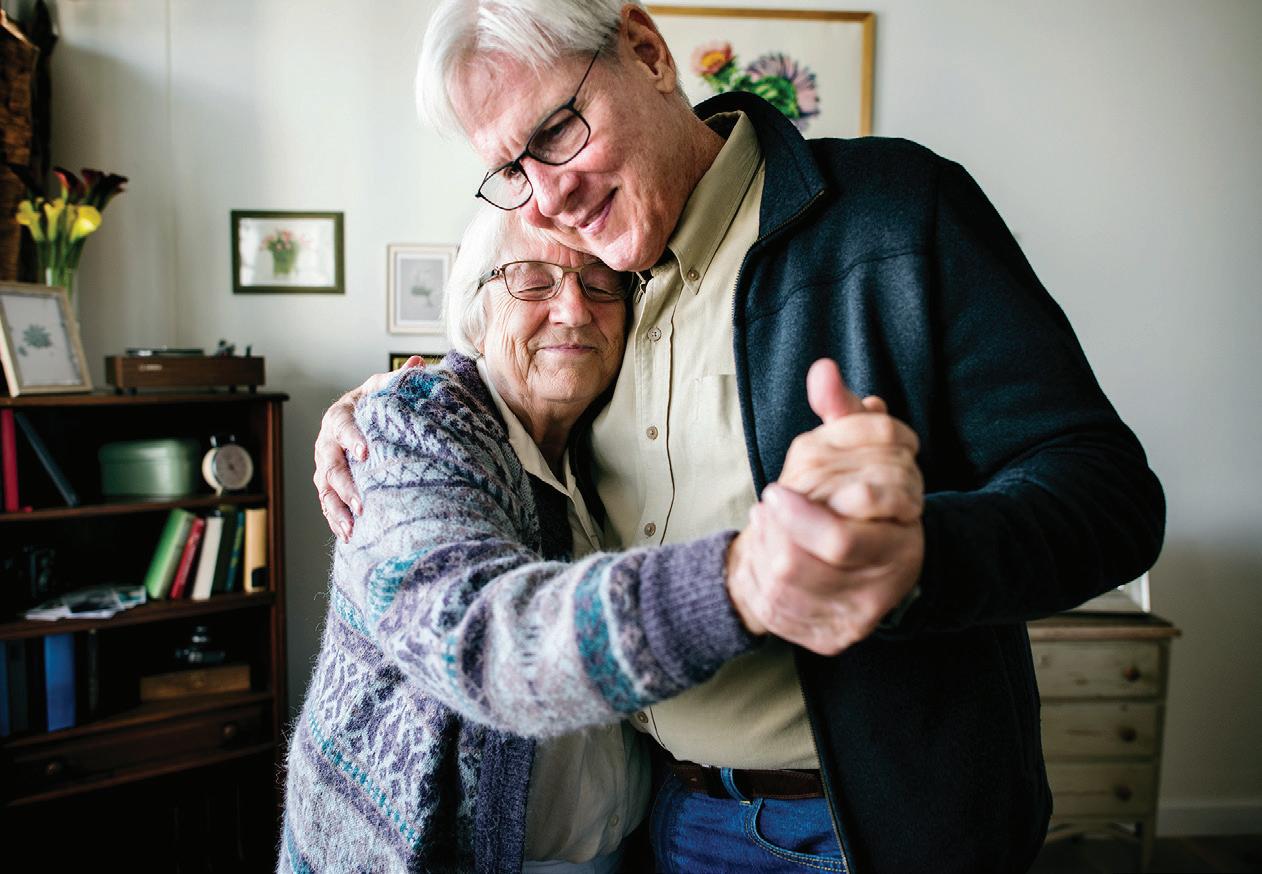
By STEPHEN WADE ASSOCIATED PRESS
TOKYO — Here’s the message from Dr. Marcas Bamman, a physiologist with decades of research into aging who preaches the benefits of weight-resistance training for those who are getting up there.
We’re talking 60-plus — women and men. And we’re talking about hitting the gym and weight training. Don’t be put off, Bamman says.
“Resistance training is in many ways the true fountain of youth,” Bamman said in an interview with The Associated Press. “I like to say the fountain of youth is the water cooler in the gym.”
Of course, there are biological limits. But Bamman says the bulk of age-related decline in strength, flexibility and endurance is behavioral — putting too few demands on the body, not too many.
“When I tell somebody that in four to six months your strength and muscle mass and overall muscle function is going to elevate to the levels of people 30 to 35 years younger, that hits home,” he said.
So you know you’re too sedentary and the birthdays keep piling up. You suspect resistance training would be beneficial. But perhaps you’re intimidated. Don’t be. Getting started
Check with medical professionals to make sure there are no health problems that stand in your way.
Then find a gym. Larger gyms offer a social component with things to do on a day off from weight training. And Bamman suggests getting a trainer.
“It’s actually quite safe, but it does require proper progression,”
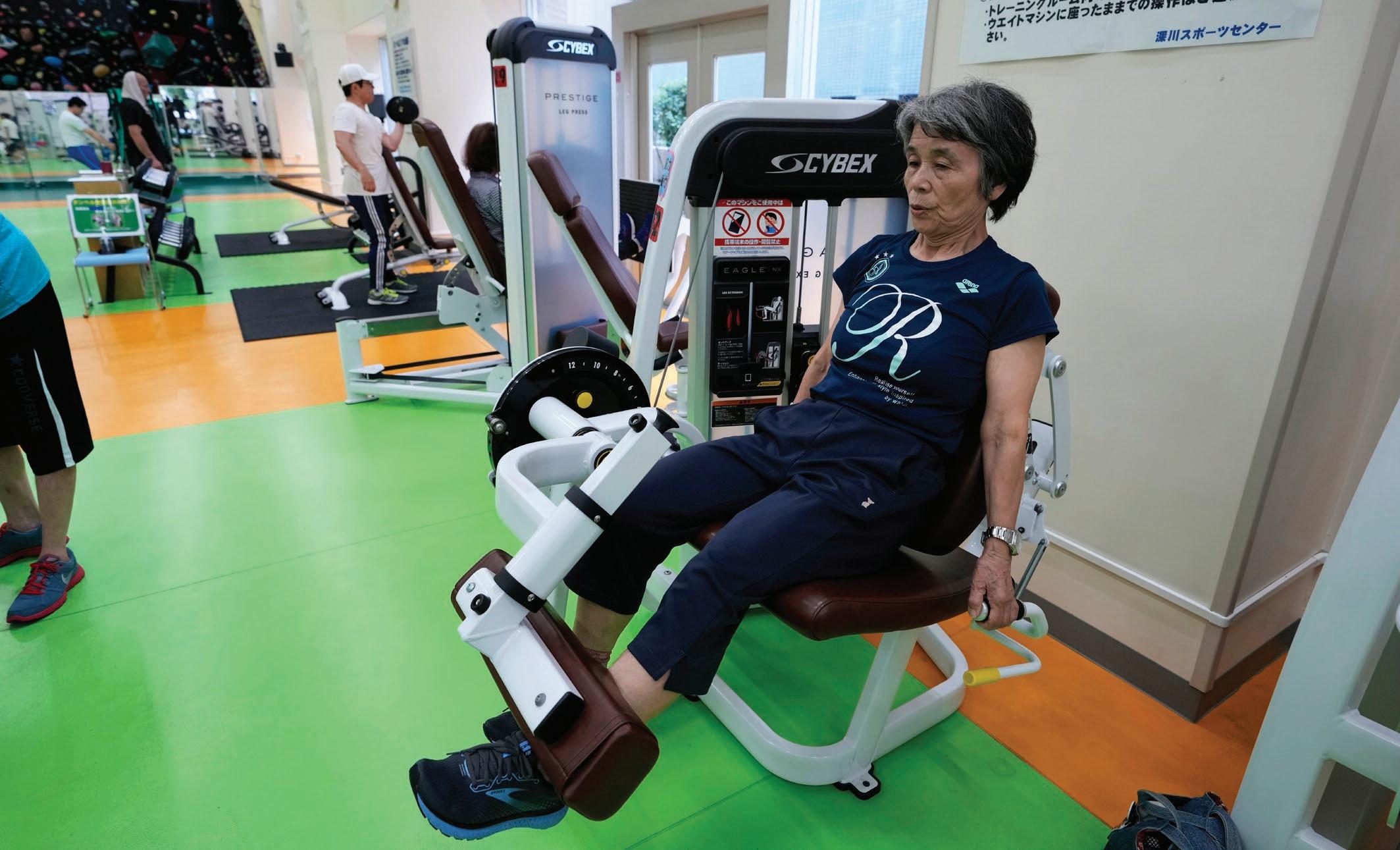
Bamman said. “You have to have a good instructor who can teach the movements properly.”
Bamman, a research scientist at the Florida Institute for Human & Machine Cognition, said finding a fully qualified trainer can be tricky.
“We need more rigorous certification of trainers,” he said. “The problem is that you can go online tonight and pay $50 and get some certification as a trainer.”
Done and dusted in an hour
Bamman suggests resistance training twice a week. Three times is even better, and he recommends days with no weight training in between. For instance, work out on Monday, Wednesday and Friday, and let Tuesday and Thursday be days of rest.
He suggests 10 different exercise movements — eight is sufficient. Do 10 repetitions of each movement. Do this three times, described as three sets. Then move on to the next movement.
When you reach the 10th repetition, you should feel you can’t do many more. If you could have done 10 more reps, you might want to increase the resistance.
Bamman says machines are
better for beginners, but free weights — barbells or dumbbells — may be more effective as you gain confidence.
Before the weights, start with a 5-10 minute warmup — on the treadmill, stationary bike or elliptical machine — to get the blood flowing. You can add a few minutes on the mat for stretching and abdominal work.
Then come the weights.
“Sometimes you see people who sit on the machine, do a set and then play with their phone for three or four minutes. We like to keep them moving.”
Women may benefit even more than men
Women may benefit from resistance training even more than men because it’s a way to fight osteoporosis, the loss of bone density.
“Women are on a disadvantaged trajectory for bone loss, particularly in susceptible areas such as the hips and lower back,” said Bamman, who completed his doctorate at the University of Florida College of Medicine.
“But the strength-training benefits for both sexes are really important. There are no sex differences in the ability to respond. In
gaining muscle mass and strength in untrained people, men and women track the same.
Yasuko Kuroi is 72 and started resistance training about 20 years ago.
“I saw the men in the gym and thought I could do that, too,” she said, speaking at a municipal recreation center in Tokyo.
The body demands work
In a few words: Use it or lose it.
Bamman cautions against pampering yourself and criticized even health care professionals “who baby seniors.” Of course, common sense is required.
“Our human body is a demand-based system,” he explained. “If you chronically impart a low demand on the body, we have adaptations to low demand. That’s why we lose muscle mass, that’s why we get weaker. We’re not demanding much.”
“But if you put high demands on the system — like resistance training — now the body has to adapt to these higher demands. The body says: ‘To adapt to these new demands I’ve got to make my bones stronger. I’ve got to make my muscles bigger.’ ”
The attempted assassination of former President Donald Trump made me think of past presidents and one Idaho governor who have been assassinated.
Most U.S citizens know about the assassinations of Presidents Abraham Lincoln and John F. Kennedy, but not much about the assassinations of Presidents James Garfield and William McKinley. Before I discuss the deaths of those four presidents, I want to tell you about former Idaho Gov. Frank Steunenberg. He was our governor from 1897 to 1901. The International Workers of the World, known as the IWW or Wobblies, had never forgiven Gov. Steunenberg for using force to stop the riots in the Coeur d’Alene mining region.
Borah, a high school in Boise, and more. The union leaders were not convicted, but Orchard was convicted of the governor’s murder and spent the rest of his life in the Idaho State Prison until his 1954 death.

Steunenberg retired to his home in Caldwell, where he was killed in 1905 by a bomb that was attached to his home yard gate that was rigged to explode when the gate was opened. An immediate $25,000 reward was offered, and a man named Harry Orchard was arrested. He confessed and said the IWW leaders hired him to assassinate Steunenberg.
The huge trial attracted much attention with more than 50 reporters from the nation’s largest newspapers covering it. A famous attorney, Clarence Darrow from Chicago, led the defense and future Idaho Gov. James Hawley led the prosecution. Hawley was assisted by young lawyer William Borah, who went on to serve many years as one of Idaho’s U.S. senators. Things in Idaho named for Borah include Mount
Belle Steunenberg, the governor’s widow, wrote to and visited Orchard in prison. There are still relatives of Gov. Steunenberg alive. A Caldwell friend of mine, the late Bill Crookham who served in the Idaho Legislature, was related to the governor. There is a bronze statue of Gov. Steunenberg in front of the Idaho Capitol building. Assassination attempts and plots on U.S. presidents have been numerous. More than 20 attempts to kill sitting and former presidents, as well as the presidents-elect are known. The assassination of President Lincoln took place April 14, 1865, when he was shot in the back of his head by Confederate sympathizer John Wilkes Booth. Lincoln and his wife, Mary Todd Lincoln, were attending a play. He died the next morning. Booth was shot and killed on April 26, 1865.
President Garfield was shot and killed in Washington, D.C., on July 2, 1881, and died 11 weeks later. His assassin, Charles Guiteau was executed by hanging June 30, 1882.
President McKinley was shot and killed at the PanAm Exposition by Leon Czolgosz in Buffalo, N.Y. Czolgosz was executed by electric chair Oct. 29, 1901.
President John F. Kennedy was shot and killed Nov. 22, 1963, in Dallas while riding in a motorcade with his wife Jacqueline.
Lee Harvey Oswald was arrested shortly after, and Nov. 24, 1963, while he was handcuffed to a detective, Oswald was shot and killed by Kennedy supporter Jack Ruby. I remember the day well because I was a 30-year-old eighth grade teacher at Asotin. I received a phone call from Etta Bolick, the parent of Barbara, a student in my class. Mrs. Bolick told me about Kennedy’s death.
The next few days, Asotin and the nation mourned and school was canceled. At the time, my beloved late wife Barbara was 24, daughter Jolyn was 4 and son Doug was a year old.
Let’s take a look at failed assassination attempts. On Jan. 30, 1835, a man named Richard Lawrence aimed two pistols at President Andrew Jackson, but the pistols misfired. Jackson beat him severely. Lawrence was found guilty by reason of insanity and confined to a mental institution.
In August 1864, a rifle shot missed President Lincoln by inches.
In 1912, three years after he left office, former President Theodore Roosevelt was shot in the chest by John Schrank. Schrank was found insane and institutionalized.
On Nov. 19, 1928, President-elect Herbert Hoover escaped an attempt to blow up his railroad car in Argentina. On Feb. 15, 1933, just three weeks before Franklin Roosevelt was to take office, a man named Gieseppe Zangara fired five shots at him. It was in Miami, and FDR was not hurt, but four people were injured and Chicago mayor Anton Cermak was killed. Zangara was found guilty and executed March 20, 1933.
On Nov. 1, 1950, two activists attempted to kill President Harry Truman
in Washington, D.C. White House Police officer Leslie Coffelt was killed when he killed the attacker. The would-be assassin was sentenced to life in prison.
Before he was assassinated, President Kennedy was threatened by Richard Pavlick on Dec. 1, 1961. Pavlick was imprisoned for six years. On Nov. 2, 1963, an attempted assassination of President Kennedy was stopped by an FBI tip-off.
On April 13, 1972, Arthur Bremer intended to shoot President Richard Nixon, but did not because of strong security. A few weeks later he shot and injured Alabama Gov. George Wallace. On Feb. 22, 1974, Samuel Byck planned to kill Nixon by crashing a commercial airliner into the White House. On the ground, he shot the pilot and copilot, but he was shot and killed himself.
On Sept. 5, 1975, in Sacramento, Calif., Lynette Fromme drew a pistol on President Gerald Ford but was stopped by a Secret Service agent. Fromme was sentence to life in prison, but was released in 2009.
On Sept. 22, 1975, in San Francisco, Sara Jane Moore fired a revolver at Ford but missed because a bystander grabbed Moore’s arm. Moore was sentenced to life in prison, but was released after 30 years.
Raymond Harvey was arrested in Los Angeles on May 5, 1979, carrying a starter pistol 10 minutes before President Jimmy Carter was to give a speech. Harvey had a history of mental illness, but was jailed and later released for lack of evidence. On March 30, 1981, President Ronald Reagan and three other men were shot and wounded in Washington, D.C. Reagan was seriously injured. The
attempted killer was John Hinckley who was deemed mentally ill and confined to an institution.
After President George H.W. Bush left the White House, bombs were smuggled into Kuwait to kill him by car bomb, but the plot was stopped.
There were four different assassination plots against President Bill Clinton. One was to kill him while he was jogging in 1994. Another was when a man flew a single engine plane onto the White House lawn. The man was killed when the plane crashed. On Oct. 29, 1994, a man fired 29 shots at the White House, but he was tackled and sentenced to 40 years in prison. In 1996, in Manila, a bomb was discovered under a bridge where Clinton’s motorcade drove.
On Feb. 7, 2001, Robert Pickett shot several times at the White House when George W. Bush was president. The Secret Service wounded Pickett and he was sentenced to three years in prison. On May 10, 2005, in Russia, a grenade was thrown at Bush but it failed to explode.
A scare came in Denver at the 2008 Democratic National Convention when a rumor said three men planned to assassinate Barack Obama, but there was no threat. On Oct. 22, 2008, two men were arrested and sentenced to prison for their plan to shoot Obama. In April 2013, a letter filled with poison was sent to President Obama. Being president is a dangerous position.
Riggs, 90, is a lifelong Lewistonian. He’s an avid Warriors fan, a retired educator, coach and school superintendent and volunteers his time at the Nez Perce County Historical Society. He can be reached at bdriggo@gmail.com.
The first thing you notice when you start driving in Europe is how fast they drive.
In some places, if you’re driving in the left lane of multiple lanes, you’ll see cars looming up behind you and flashing their headlights so you’ll get out of their way. A favorite manner of driving there is to fly past and then cut in front of you to take the next exit. Drivers wishing to pass on two-lane roads with oncoming traffic often go right ahead and pass. Other drivers calmly move over to make room. It took me time to adjust to that.

In Italy, traffic signs are often seen as only a suggestion. Once I was following a police car on a narrow road with no-passing lines when a car overtook us both. The police ignored it.
Europeans drive those little cars as if they are as indestructible as toy Matchbox cars. However, you do adapt to this attitude and it happens frighteningly fast.
On time, my husband and I were traveling across Slovenia in two separate cars to return a rental car.
We knew we would likely become separated in traffic so agreed to meet at a

certain point. I did indeed lose sight of him as he got ahead. I had memorized his license plate so as not to miss him even though he was in one of the few blue cars in existence. Later, as I was overtaking a caravan of three lorries (smaller, soft-sided semis) I spotted him parked at the side of the motorway.
Thinking he’d had car trouble, I cut between two of the rigs and careened to a screeching stop. I couldn’t believe that I, too, was driving as if my little car was an indestructible toy.
Speed limits vary from country to country but are posted at borders — usually 110 to 130 kph (68 to 80.7 mph). The street in front of the school where I taught in Czech Republic was 70 kph (43.5 mph), rather fast for a school zone.
Speeds are marked by a little circular sign with the number on it, and when that speed changes, a similar sign has a diagonal mark through that number.
Getting a driver’s license in Europe is very expensive and difficult. Prospective drivers must
take lessons in special schools and demonstrate skill in handling a car in any type of traffic and weather condition. In both Austria and Slovenia, step No. 1 is to take a first-aid course. These schools turn out excellent drivers.
I have only driven in a few countries there — Germany, Austria, Switzerland, Slovenia, Italy, Croatia and Czech Republic. It was interesting that the year I lived in Czech Republic was not long after the fall of communism and people there were finally able to buy faster cars from western Europe. Before, they had mostly driven Russian Ladas, Czech-made Skodas and the famous plastic Trabants. But they had not yet learned to handle the power of the new cars, so nearly every time I traveled, I saw a wreck on the highway.
Foreigners in Slovenia must have green license plates whereas citizens have white, and police can stop you whenever they want. I have been stopped just to show that I had the proper paperwork — my visa, driver’s license, registration and proof of







a safely inspection. The way a motorist is stopped is much different — no sirens or flashing lights. Police park at the side of the road and hold up a red paddle as you approach. When I lived there, most of the little cars had an unusual feature. Headlight beams were adjustable according to how many people were in the car. More passengers made the front end higher, so you were able to lower the beams to handle the heavier rear-end weight. One thing I learned to use is traffic circles called roundabouts. You yield to traffic already in the roundabout and you are supposed to signal before you take an exit. They are efficient, save time and gas and have replaced numerous stoplights. Then when you return to the U.S. and begin driving on our highways, the first thing you notice is how slow drivers go.
Johnson, of Grangeville, worked in three different European countries — Hungary, Czech Republic and Slovenia — in the 1990s and early 2000s. She can be reached at johnsondixie@hotmail.com.












WA-ID Volunteer Center, in the Lewiston Community Center at 1424 Main St., strives to provide individualized volunteer opportunities for those wishing to serve in Lewiston, Clarkston, Asotin, Pomeroy, Moscow and the Orofino area. Information and other volunteer openings can be found at waidvolunteercenter.org or by calling (208) 746-7787.
Volunteer needs include:
Tutors — Help students to be proficient readers by the third grade. One-on-one reading tutoring in schools for students below reading grade level. Volunteers need to be able to commit to at least an hour a week for the school year. Background check required.
Food bank help — Volunteers are needed to repack frozen and dry foods for distribution. Front counter volunteers and drivers for morning food pickups also are needed.
AARP tax preparer — Do you feel comfortable with computers? Can you spare a couple of mornings a week? AARP Tax Aide Program needs volunteers to help prepare free basic tax returns for seniors and low-income individuals. No experience necessary. Training and materials are provided.
Project Warmup — Crafters are needed to make hats, scarves, mittens and lap blankets (yarn is provided). Completed items are donated to local nonprofit agencies. If you have yarn to donate our volunteers will put it to good use.
Companions — The Senior Companion program provides companionship and respite care to the elderly and disabled. It allows low-income senior volunteers an opportunity to assist those who need minor help to continue living independently. Senior Companions visit
clients in their homes, but it is not an inhome care program.
Medicare counselor — The State Health Insurance Benefits Advisors (SHIBA) program trains volunteers to assist local seniors with Medicare questions for Asotin, Garfield and Whitman counties.
Local hospital auxiliary — Volunteers are needed to greet people, deliver flowers, staff the courtesy cart, deliver mail, assist in the gift shop, create baby and child items, do clerical work, provide hospital tours and more.
Lewiston City Library — Volunteer needs include circulation support, tech tutors and programming support.
Museum docents — Skills include meet-and-greet abilities, friendly personality and the ability to answer questions about the displays at the center. Training is provided.
Transportation — Drive seniors or disabled community members to and from destinations across the LewistonClarkston Valley. You must have a valid driver’s license and auto insurance.
Garden and Park Volunteers — General lawn maintenance, weeding, sweeping, etc. Training provided. Community service approved.
Interlink Inc. is a nonprofit organization in Clarkston that matches community volunteers to people needing assistance to remain independent in their own homes. For information about becoming a volunteer and volunteer opportunities, call (509) 751-9143. Volunteer applications and additional information also can be found online at interlinkvolunteers.org.



Pre-planning your final wishes gives you and your family peace of mind. Whether cremation or burial - we are proud to offer a variety of options for every budget.

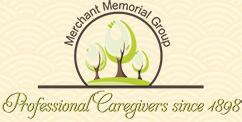


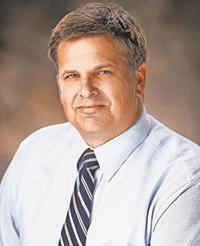







Cottonwood Community Hall
506 King St., basement, Cottonwood, (208) 792-2465, meals at noon Tuesdays.
Craig Mountain Senior Center
413 Nezperce St., Winchester, (208) 924-6581, meals at noon Wednesdays.
Daley Senior Care
30302 Harley Lane, Culdesac, (208) 791-7438, meals at 1 p.m. and 4 p.m. daily.
Friendly Senior Citizens of Troy
100 S. Main St., Troy, (208) 835-6092, dine-in or pick-up; noon Wednesdays.
Grangeville Senior Center
(208) 882-1562, noon Tuesdays and Thursdays.
Nezperce Senior Citizens
501 Cedar St., Nezperce, (208) 937-2465, noon
Building B, Northside Entrance, Pullman, (509) 338-3307, meals at noon Tuesdays and Fridays.
Riggins Odd Fellows Building





Mondays and Thursdays.
Orofino Senior Center



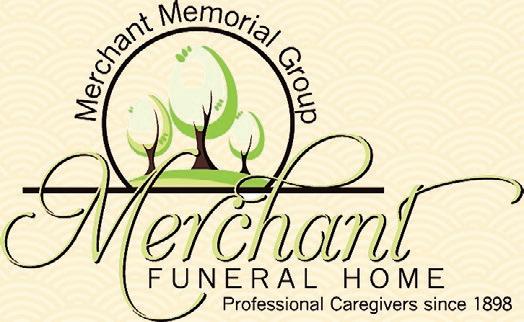
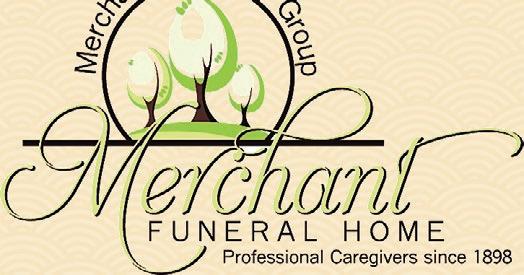



108 Truck Route, Grangeville, (208) 983-2033, meals are at noon Mondays, Wednesdays and Fridays.
Juliaetta-Kendrick Senior Citizens Center
104 S. Sixth St., Kendrick, (208) 289-5031, meals from noon to 1 p.m. Wednesdays and Fridays.
Kamiah Senior Center

125 N. Maple St., Kamiah, (208) 935-0244, meals at noon Mondays, Wednesdays and Fridays.
Lewiston Community Center
930 Michigan Ave., Orofino, (208) 476-4238, noon Tuesdays and Fridays.
Palouse Senior Meals
220 E. Main St., Palouse, (509) 878-2301, meals at noon Wednesdays.
Pomeroy Senior Center
695 Main St., Pomeroy, (509) 843-3308, noon Mondays, Wednesdays and Fridays.
Potlatch Senior Citizens
121 S. Lodge St., Riggins, (208) 628-4147, meals at noon Tuesdays.
Spud Hill Seniors
401 Line St., Deary, (208) 877-1717, meals at noon Tuesdays.
Senior Round Table
549 Fifth St., Clarkston, (509) 295-8685, noon Tuesdays, Thursdays, Fridays.
Weippe Hilltop Senior Citizens Center





1424 Main St., Lewiston, (208) 743-6983, meals at noon Mondays, Tuesdays and Wednesdays.
Potlatch Senior Citizens Meal Site, 645 Pine St., Potlatch, (208) 875-1071, meals at noon Mondays, Wednesdays and Fridays.
115 First St. W., Weippe, (208) 435-4553, meals noon Mondays and Thursdays.
Pullman Meals on Wheels (509) 397-4305.





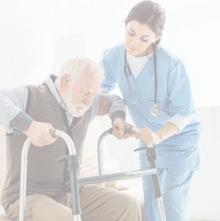
Moscow Senior Center
412 E. Third St., Moscow,
Pullman Senior Center
190 SE Crestview St.,
Valley Meals on Wheels (208) 799-5767.







For the LewistonClarkston Valley
> Monday-Friday
Coffee, 10 a.m. to noon, Valley Community Center, 549 Fifth St., Clarkston.
> Monday, Wednesday, Friday
Coffee, 10 a.m. to noon, $1 donation, Sixth Street Senior Center, 832 Sixth St., Clarkston.
Fit and Fall Proof, 9-9:45 a.m., Congregational Presbyterian Church, 709 Sixth St., Lewiston.
Fit and Fall Proof, 10:45-11:30 a.m., Orchards United Methodist Church, 1213 Burrell Ave., Lewiston.
> Mondays and Wednesdays
Yoga/lowimpact exercise, 9-10 a.m., Valley Community Center.
> Mondays and Fridays
Fit and Fall Proof, 10-11 a.m., Emmanuel Baptist Church, 2200 11th Ave., Lewiston.
> Mondays Painting group, noon to 4 p.m., Valley Community Center.
Dance practice, 6:30-8 p.m., Sixth Street Senior Center.
> Tuesdays
Blood pressure checks, 11 a.m.12:30 p.m., Valley Community Center.
> Tuesdays and Thursdays
Fit and Fall Proof, 8:15-9:15 a.m., Elks Lodge, 3444 Country Club Drive, Lewiston.
> Wednesdays
Bridge, 12:30-4 p.m., Valley Community Center.
Line dance, 2-5 p.m., Sixth Street Senior Center.
> Thursdays
Footcare, Valley Community Center. By appointment only: (253) 218-7091.
> Fridays Country jam, 10 a.m. to noon, Sixth Street Senior Center. Cornhole games, 10 a.m. to 2 p.m., Valley Community Center.
> Saturdays and Sundays Dance lessons, 5-6:30 p.m., $5 per lesson, Sixth Street Senior Center. Call or text (509) 5529457 to register.
> Aug. 6
Karaoke, 6:30 p.m., $1 entry, Sixth Street Senior Center.
> Aug. 7 Games/Cards, 3-4:30 p.m., Valley Community Center.
> Aug. 13 and 27
Foot care, Valley Community Center. By appointment only: (253) 218-7091.
> Aug. 8 and 22
Dance, 6:30-8:30
p.m., $5 donation, Sixth Street Senior Center.
> Aug. 26
Seaport Quilters, 6-9 p.m., Valley Community Center.
> Aug. 29
Sock hop-themed dance, 6 p.m., Sixth Street Senior Center.

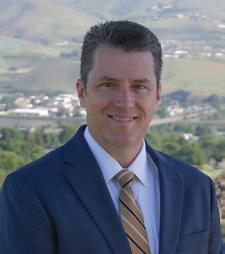
• We have plans starting from only $16 per month with RX
• Go with who knows the business
• Lower price vs. higher price explained in simple language

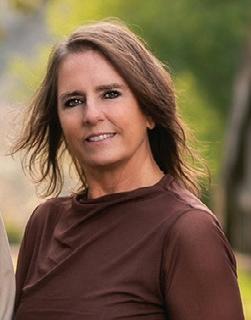
Guests
Ping Pong, Pool Tables. Sing Along: first Thursday of each month. Karaoke: second & third Thursdays. "Dine and dance to live music the first Wednesday and every Friday of the


Open Monday - Thursday | 8:30am - 5:30pm
LEWISTON SENIOR NUTRITION PROGRAM — When: Noon, Mon./Tues. and 11:30 a.m. Wed.
5 Chicken casserole
12 Broccoli casserole
19 Eggplant parmesan 20 Sausage Cajun casserole
M
13 Meatloaf 14 Chicken bacon ranch casserole
21 Shepherd’s pie
26 Beef stroganoff 27 Beef enchiladas 28 Tuna salad
6 Orange chicken W 7 Spaghetti
All meals served with: hot veggies, salad, fruit and bread.
• Where: Lewiston Community Center, 1424 Main St., or call for delivery at (208) 743-6983. On-site meals are every Monday through Wednesday. • Cost: $4 suggested for seniors 60 and older; $5 for nonseniors • Note: Menu is subject to change.
SENIOR ROUND TABLE NUTRITION PROGRAM — When: Noon, Tues./Thurs./Fri. • Where: Valley Community and Senior Center, 549 Fifth St., No. F, Clarkston, or call (509) 758-3816 for delivery. • Cost: Donations appreciated for seniors 60 and older; $7 for nonseniors • Note: Menu is subject to change.
6 Sausage breakfast casserole/hashbrowns/ carrots/fruit cocktail/juice
13 Salisbury steak/mashed potatoes/green beans/mandarin oranges/roll
20 Lasagna/broccoli/cauliflower/applesauce/ garlic toast
27 Birthday dinner: Roast pork/mashed potatoes/carrots/juice/roll/cake and ice cream
8 Sweet-and-sour chicken over rice/veggie medley/pickled beets/pears/roll
15 Finger steaks/tater tots/peas/peaches/ cookie
9 Ham and cheese sandwich/ salad bar
16 Egg salad sandwich/ salad bar
22 Chicken fried steak/mashed potatoes/ corn/peaches/rolls
23 Chicken burger/ salad bar
29 Baked fish/jojos/veggie medley/pears/ cookie 30 Roast beef and cheese sandwich/ salad bar
MOSCOW SENIOR NUTRITION PROGRAM — When: Noon, Tues./Thurs. • Where: 1912 Center, 412 E. Third St. or call (208) 310-3779 for delivery. Cost: $5 suggested for seniors 60 and older; $7 for nonseniors. • Notes: Soup (starting at 10:30 a.m.), salad bar (at 11:30 a.m.) and dessert are available daily. Menu is subject to change. • Online: users.moscow.com/srcenter.
6 Chicken chow mein/pasta/roasted broccoli/melon
13 Chicken thighs/crispy oven kale/roll/mashed potatoes
20 Meatloaf/roasted cauliflower/carrots/roll
T27 Steak burrito bowl/mixed berries
8 Beef gyros/Greek salad/oven fries/mandarin oranges
15 Beef lasagna/roasted squash/apple slices/roll
22 Ham/mashed potatoes/broccoli, carrots/roll/watermelon
29 Omelet/roasted potatoes/toast/fruit
Menus are prepared by St. Joseph Regional Medical Center and are subject to change. Meals are delivered to established clients between 11 a.m. and 1 p.m. 365 days of the year, with delivery guaranteed by 1 p.m. each day. Individuals can have a hot meal delivered to their residence for $4 per day or a hot meal and a sack lunch for $5 per day. More info: (208) 799-5767.
HOT: Philly steak and onions/potatoes/cabbage
SACK: Uncrustable/carrot almond salad/cake 1
SACK: Chicken salad/ chips/pineapple 2
HOT: Salisbury steak/ mashed potatoes/ green beans
HOT: Spaghetti with meat sauce/ mushrooms
SACK: Pastrami/threebean salad/cookies 3
4 5
HOT: Ham/scalloped potatoes/ broccoli
SACK: Roast beef/pasta salad/Jell-O fluff
HOT: Lasagna/ squash
SACK: Tuna salad/green salad/ apple
HOT: Chicken pot pie/green beans
SACK: Egg salad/ broccoli salad/cookies
SACK: Uncrustable/ chips/peaches 7
HOT: Teriyaki meatballs/rice/ peas
HOT: Chicken and rice casserole/cauliflower
SACK: Ham/potato salad/chocolate pudding
9
HOT: Tuna noodle casserole/carrots
SACK: Pastrami/ cucumber and tomato salad/fruit cobbler
10
HOT: Stroganoff/ noodles/lima beans
SACK: Turkey salad/celery and carrots/banana
HOT: Roasted turkey/yams/ green beans
SACK: Seafood salad/ coleslaw/pudding
18
HOT: Pork loin/ mashed potatoes/ squash
SACK: Tuna salad/pickled beet salad/applesauce
HOT: Ham/scalloped potatoes/ broccoli
HOT: Chicken cordon bleu/ peas
SACK: Egg salad/ chips/pears 12 13
SACK: Pastrami/ broccoli salad/pear 19
SACK: Roast beef/pasta salad/Jell-O fluff 25 26
HOT: Stuffed peppers/rice/ broccoli
11 14
SACK: Turkey/chickpea salad/Jell-O
HOT: Pesto chicken casserole/ cauliflower
HOT: Lasagna/ squash
SACK: Tuna salad/green salad/ apple
HOT: Cheeseburger casserole/corn
SACK: Turkey salad/pea salad/cottage cheese 20
HOT: Chicken pot pie/green beans
SACK: Egg salad/ broccoli salad/cookies
HOT: Beefy mac and cheese/cauliflower
SACK: Chicken salad/spinach salad/ cookies
HOT: Chicken strips/mac and cheese/peas
SACK: Egg salad/green salad/lemon pudding 21
HOT: Teriyaki meatballs/rice/ peas
SACK: Uncrustable/ chips/peaches 28
HOT: Chicken tetrazzini/carrots
SACK: Roast beef/potato salad/ orange 15
HOT: Philly steak and onions/potatoes/cabbage
SACK: Uncrustable/carrot almond salad/cake 22
HOT: Chicken and rice casserole/cauliflower
SACK: Ham/potato salad/chocolate pudding
16
HOT: Taco casserole/corn
SACK: Uncrustable/yogurt/ peaches
HOT: Salisbury steak/ mashed potatoes/ green beans
SACK: Chicken salad/ chips/pineapple
HOT: Tuna noodle casserole/carrots
SACK: Pastrami/ cucumber and tomato salad/fruit cobbler
HOT: Vegetarian lasagna/mixed veggies
SACK: Ham/crudite cup/ fruit salad 17
HOT: Spaghetti with meat sauce/ mushrooms
SACK: Pastrami/threebean salad/cookies
HOT: Stroganoff/ noodles/lima beans
SACK: Turkey salad/celery and carrots/banana